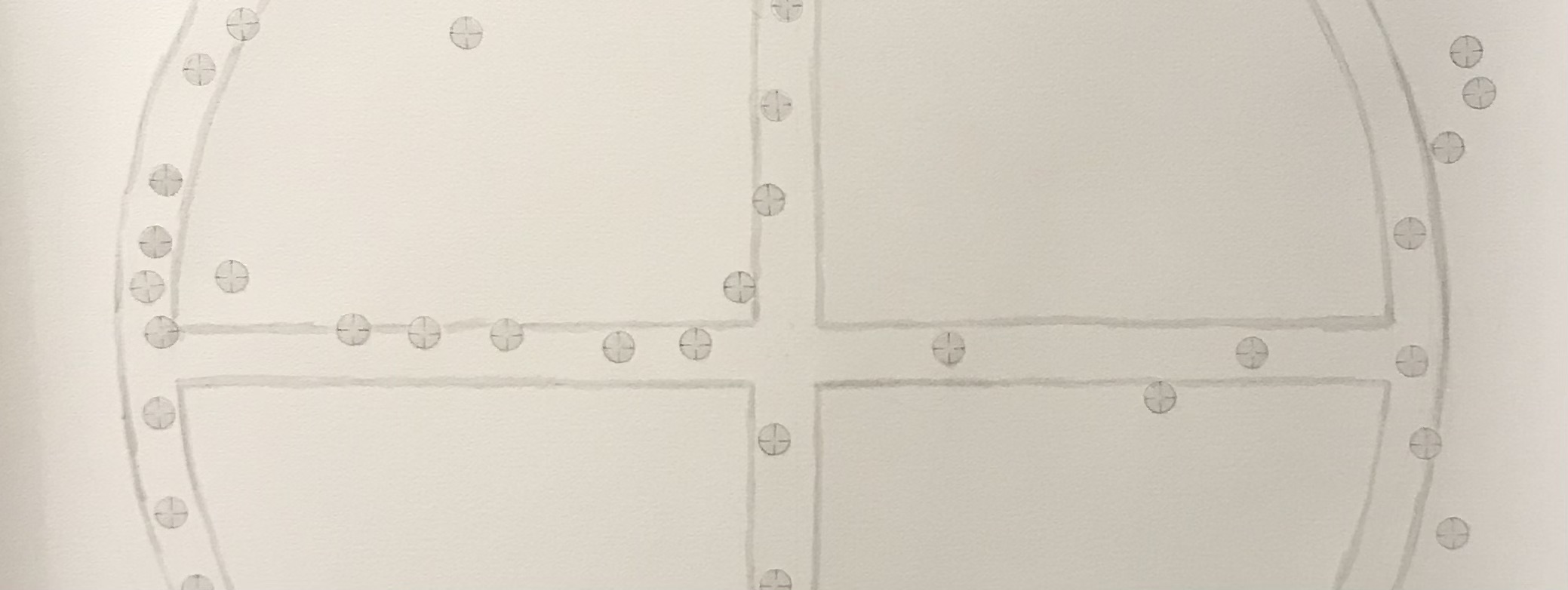The Stronghold Plateau is located in the Badlands on the Pine Ridge Indian Reservation. The Lakota know it as Oonakizin (Stronghold). It is the location of the USAF Badlands Bombing Range, in use between 1942-1968 for training bomber pilots. Today The USAF retains 2500 acres where there is still unexploded ordnance left in the ground. The area is officially closed to the public.
This ink painting represents a bulls eye that was plowed into the ground where 72 old cars, represented in this painting by bombing site crosshairs, were placed in it as targets. When I saw an aerial photo of this bulls eye I thought of the Medicine Wheel and how Raymond had been born into a world when the Lakota spiritual ceremonies and practices were forced underground.
Raymond Pipe On Head was not directly affected when, by the right of eminent domain the USAF took possession at 3 cents an acre of 341,726 acres of land on the Pine Ridge Reservation, but it did affect the lives of many in his generation. 125 families were relocated from their farms and ranches.
Dewey Beard and his wife raised horses on the Stronghold Plateau. They were among the families forced to sell their property at a price that would not afford them the opportunity to purchase comparable land. He and his wife ended their days in poverty in Rapid City.
Dewey Beard had fought at the Battle of the Little Big Horn and he was one of Spotted Elk/Bigfoot’s Ghost Dancers who survived the Wounded Knee Massacre. He worked with James Pipe On Head to help pass Sen. Case’s bill. Liquidating the Liability of the United States For the Massacre of Sioux Indian Men, Women, and Children at Wounded Knee. Dewey Beard and his brothers were among the first survivors to publicly describe and memorialize Wounded Knee as a massacre.
Stronghold Massacre
Around the time of the Wounded Knee Massacre, The Stronghold was the scene of another massacre of Ghost Dancers who had gathered on the Stronghold to pray for the return of the buffalo, their ancestors, and for their traditional way of life in a world without the Whiteman. The Ghost Dance scared many of the White settlers and the US Government into thinking that the Lakota were preparing for war. Following the example of the Federal troops, the South Dakota Home Guard entered the Stronghold and massacred seventy Ghost Dancers, men, women, old people and children, and threw their bodies over the edge of Stronghold Plateau. Their remains have recently been discovered and their shallow graves are currently at the center of conflict between the Lakota Grassroots Oyate and the National Park Service’s planned fossil excavation of this site.
